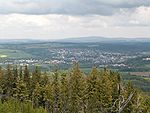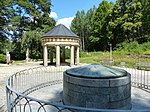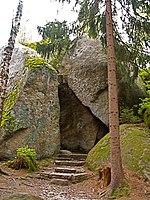Katharinenberg bei Wunsiedel
Bavaria geography stubsMountains of Bavaria

Katharinenberg bei Wunsiedel is a mountain close to the town of Wunsiedel in Bavaria, Germany.
Excerpt from the Wikipedia article Katharinenberg bei Wunsiedel (License: CC BY-SA 3.0, Authors, Images).Katharinenberg bei Wunsiedel
Kellergasse,
Geographical coordinates (GPS) Address Nearby Places Show on map
Geographical coordinates (GPS)
| Latitude | Longitude |
|---|---|
| N 50.033611111111 ° | E 12.011388888889 ° |
Address
St. Katharina
Kellergasse
95632
Bavaria, Germany
Open on Google Maps






